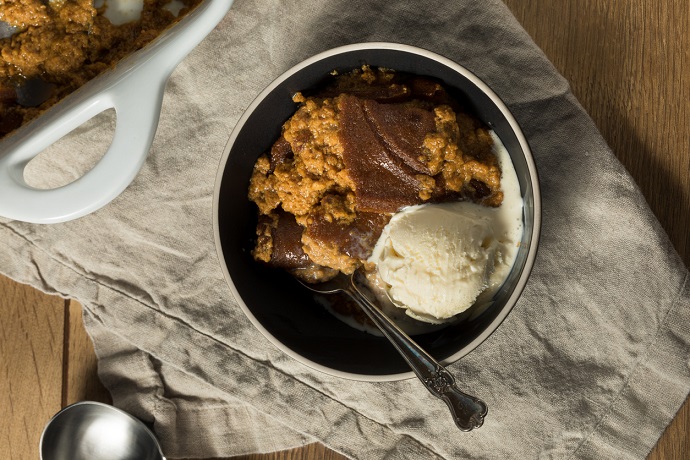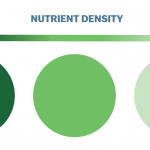What began as a day of recognition in the early 1900s with American Indian Day is now a monthlong celebration of the rich cultures and traditions of American Indians. Also known as American Indian Heritage Month or American Indian and Alaska Native Heritage Month, National Native American Heritage Month honors the many Indigenous people of the United States. Each November, we celebrate the history, culture, traditions, and contributions American Indians and Alaska Natives have made in shaping the United States.
In honor of National Native American Heritage Month, we’re highlighting a few prominent American Indian and Alaska Native chefs who’ve made their mark in the food world, helping to record, preserve, revitalize, and provide greater access to Indigenous food staples and recipes, in addition to educating others about the Indigenous way of life.
Indigenous Catering
Hillel Echo-Hawk is a speaker, chef, and catering business owner of Pawnee and Athabaskan descent. Echo-Hawk’s interest in food was inspired by growing up near the home of Katie John, an Alaska Native and subsistence fishing rights activist, in addition to watching her mother craft nutritious meals for her family. Echo-Hawk worked for years in some of Seattle’s most popular restaurants before starting her catering business, Birch Basket.
Frequently speaking at conferences, Echo-Hawk’s culinary perspective is the focus of her catering business: Indigenous food made from local, ethical, sustainable, and, most importantly, pre-Colonial ingredients (no dairy, beef, chicken, or wheat). On her catering website, Echo-Hawk says she believes food “should feed not only the body, but the spirit of the entire community.”
Partnering with Hunters and Foragers
Diné (Navajo) chef Brian Yazzie is a private chef and caterer focused on crafting and promoting nutritious Indigenous cuisine. Yazzie works with hunters, foragers, and farmers to source Indigenous ingredients, prepare them with modern techniques, and promote pre-Colonial foodways.
Focusing on Plant-Based Cuisine
Kristina Stanley of the Red Cliff Lake Superior Chippewa tribe is a pastry chef and food activist with a successful business focused on local, traditional ingredients. Stanley owns and runs Wisconsin-based Abaaso Foods, specializing in vegan deli and bakery items produced using foraged, local, tribal-sourced, and Indigenous ingredients. Stanley’s plant-based culinary perspective puts nutrient-dense, seed- and nut-based products in the foreground, along with Indigenous ingredients like mesquite and wild rice.
Like Yazzie and Echo-Hawk, Stanley is a member of the I-Collective, a nonprofit organization signifying four principles: Indigenous, inspired, innovative, and independent. Members of the I-Collective include chefs, herbalists, and activists engaged in preserving Indigenous culinary innovations and cultural traditions. The I-Collective’s wish is: “Together, let’s celebrate a new narrative with an Indigenous framework: collective promotion of a healthy food system that values people, traditional knowledge, and the planet over profit.”
Revitalizing Indigenous Foodways
Sean Sherman of the Oglala Lakota tribe is an award-winning chef, author, speaker, educator, food activist, restaurateur, and nonprofit co-founder. Co-owner of The Sioux Chef, an indigenous food education business and catering company, Sherman has dedicated his culinary career to reclaiming Indigenous foodways, helping Indigenous people achieve food sovereignty, educating people about Indigenous food, and cooking traditional foods with modern culinary techniques. Sherman, who calls himself the Sioux Chef, is also the co-founder of North American Traditional Indigenous Food Systems (NATIFS), “a nonprofit dedicated to addressing the economic and health crises affecting Native communities by reestablishing Native foodways.”
Owamni, a Minneapolis restaurant co-owned by Sherman and Dana Thompson, was named the James Beard Foundation’s Best New Restaurant in 2022. Sherman also received the foundation’s Best American Cookbook for “The Sioux Chef’s Indigenous Kitchen” in 2018 and was named a 2019 Leadership Award winner. To better understand the vital work Sherman does, check out his presentation from the 20th annual World of Flavors at The Culinary Institute of America.
Sample just a few of the flavors and ingredients of Native American cuisine by trying these recipes at home: Sautéed Hominy with Bacon and Native American Pudding (Sweet Corn Pudding).
Sautéed Hominy with Bacon Servings: 6
1 15-ounce can of hominy 3 slices diced raw bacon ¼ cup diced onions ½ teaspoon kosher salt ¼ teaspoon ground black pepper
STEP 1: Drain and rinse the hominy.
STEP 2: In a sauté pan, sauté the bacon and onions. When the bacon and onions start to caramelize, add the hominy, salt, and pepper.
STEP 3: Cook until the hominy just starts to brown and crisp.
Native American Pudding (Sweet Corn Pudding) Servings: 6
1 ¾ cups 2% milk 2 tablespoons salted butter 2 tablespoons yellow cornmeal 1 tablespoon all-purpose flour ⅛ teaspoon salt 4 tablespoons molasses 1 egg 1 ½ tablespoons granulated sugar ¼ teaspoon ground cinnamon ¼ teaspoon ground nutmeg ⅓ cup seedless golden raisins
STEP 1: Preheat oven to 250°F. Prepare 2 ½-quart casserole dish with nonstick cooking spray.
STEP 2: In a saucepan, heat the milk and butter, or heat the milk and butter for 5-6 minutes on high heat in the microwave until it’s boiling, then transfer it to a pot on the stove. Keep hot on medium heat.
STEP 3: In a separate bowl, mix the cornmeal, flour, and salt; stir in molasses. Thin the mixture with about a ½ cup of the scalded milk, adding a few tablespoons at a time, then gradually add the mixture back to the large pot of scalded milk. Cook, stirring until the mixture thickens.
STEP 4: Temper the egg by slowly adding a ½ cup of the hot milk and cornmeal mixture to the beaten egg, whisking constantly. Add the egg mixture back in with the hot milk and cornmeal mixture, and stir to combine.
STEP 5: Stir in the sugar, cinnamon, and nutmeg until smooth. At this point, if the mixture is clumpy, you can run it through a blender to smooth it out.
STEP 6: Stir in the raisins. Pour into a 2 ½-quart, shallow casserole dish. Bake for 2 hours.
STEP 7: Allow the pudding to cool for about an hour to be at its best.







